Santa Barbara Chef Crafts Healthier Cannabis Edibles
Katherine Knowlton’s Happy Chance Provides a Low-Dose, Natural Alternative to Gummies
When California voters legalized cannabis for recreational purposes in 2016, Katherine Knowlton was a culinary school grad living in San Francisco, where she worked as a food stylist and recipe developer.
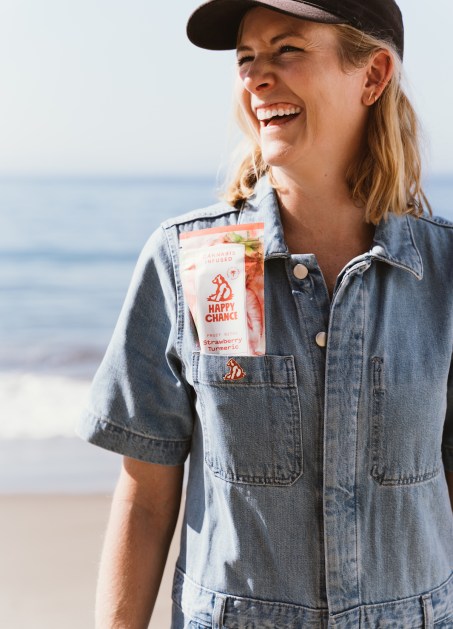
| Credit: Blake Bronstad
“I was super pumped up about cannabis becoming legal, but I couldn’t really eat any of the edibles,” said Knowlton, whose “gut health challenges” made her avoid refined sugars. “Everything was gummy and everything else was chocolate. They were just candy.”
She was well aware that many people just bought marijuana products to get high, but Knowlton knew many others using it as part of their wellbeing regime, tapping into cannabis to help with relaxation and sleeping (like her) or for the plant’s anti-inflammatory properties. “All of these gummies are putting sugar or corn syrup, which are inflammatory, together with cannabis,” she said. “It’s a counterintuitive thing.”
Add to that concerns over nebulous sourcing and even scarier ingredients, like titanium dioxide, and Knowlton decided to start experimenting with her own edible recipes at home. Using a food processor and dehydrator, she tested more than 125 combinations of high-quality fruits, spices, nuts, root vegetables, and Medjool date sugar to develop a final series of fruit bite recipes. She then tested infusions from about 10 different cannabis extract companies, finally settling on the faster-acting, nano-emulsion, solventless rosins developed by Green Rush Alliances in Santa Barbara, where Knowlton had moved in 2018.
After pandemic delays, Knowlton released her brand Happy Chance this summer, offering three flavors of a “healthy, low-dose alternative to the modern-day gummy.” They were unveiled at The Farmacy on July 19 — “it was a massive win for us to be able to land on the shelves there,” said Knowlton of the popular Mission Street dispensary — and sold out in six days. Happy Chance is also available at the Sespe Creek Collective in Ojai, and, as of last month, for home delivery from Carpinteria to Isla Vista.
“It’s been overwhelmingly positive,” she said of the initial response. “But it’s a long road ahead and there’s a lot to do to spread awareness.”
She’s hosted demos at each dispensary, offering free, non-dosed samples of the strawberry-turmeric, blueberry-cinnamon, and mango-lime flavors to customers. Most have not seen edibles in Happy Chance’s fruit-bite form: the squishy squares taste and act like suspended jam, able to either quickly chew or slowly melt in your mouth. “People immediately assume that it’s a gummy,” she explained. “But when you have a non-medicated sample in front of you, you realize that it’s not a gummy, that it’s actually real food.”
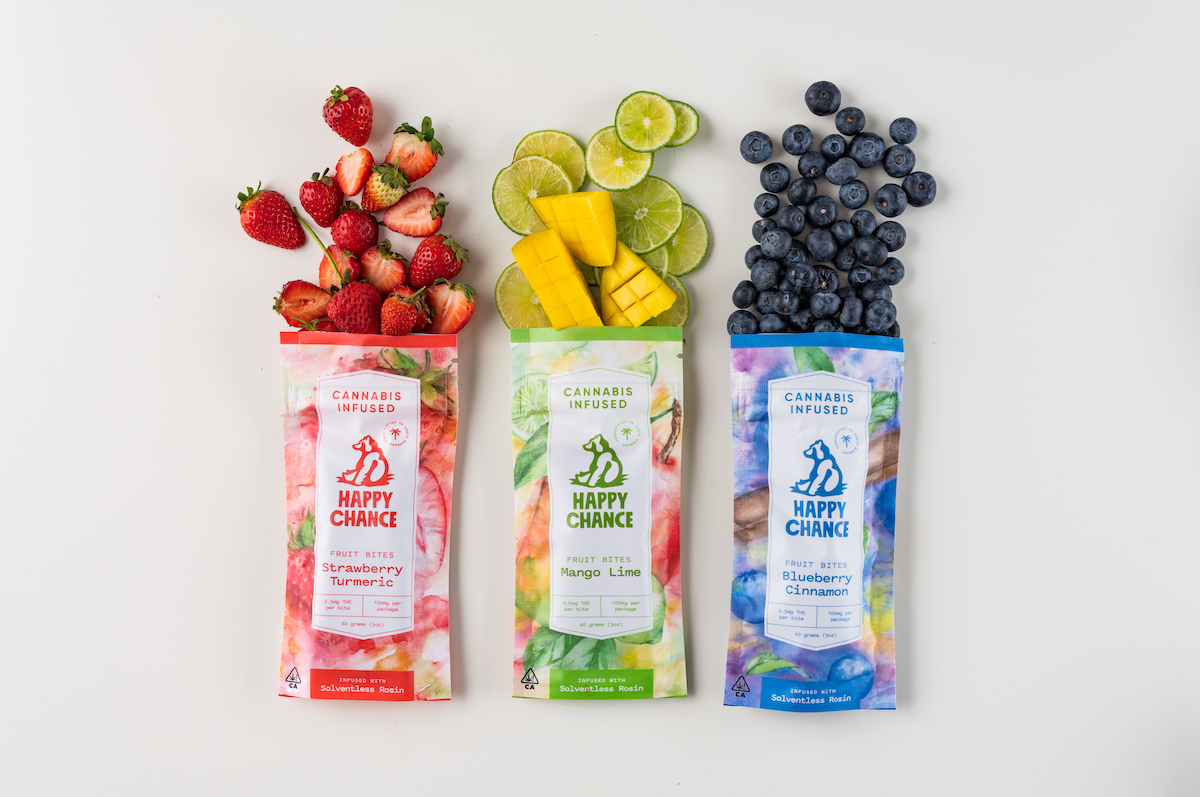
The lower dose — 2.5 milligrams of THC per tiny cube, compared to mind-bending gummies with 10mg or more — is a selling point for those seeking a mellow and managed experience. The same goes for the nano-encapsulation, which can elicit effects in just 15 to 30 minutes, depending on an individual’s metabolism and tolerance. (Traditional edibles can take an hour or more.) Combined with the organic ingredients and colorful packaging — which features a very content bear plopped on the ground — customers seem okay with paying the $30 per package, which is a bit higher than popular edibles in the $12 to $20 range.
That lazy bear is directly tied to the brand name. “Happy Chance is a real place in the mountains of North Carolina,” said Knowlton, explaining that it was the name of her grandfather’s farm, where visitors were greeted by the sight of a wooden bear hugging a tree. Growing up in Charleston, South Carolina, she hung out a lot with her grandpa, who everyone called “Big Dad,” enjoying the extensive Sunday dinners he made from scratch ingredients.
“He was one of the biggest influences on me in the kitchen,” Knowlton said. “From a very early age, I always loved cooking and entertaining.”
Sign up for Indy Today to receive fresh news from Independent.com, in your inbox, every morning.
During summers while at the University of South Carolina, and then for four years afterward, Knowlton lived in Jackson Hole, Wyoming. After managing two different restaurants, she felt her restaurant career had peaked. “There was no more going up,” she recalled.
A 2014 road trip to California lured her 26-year-old self to San Francisco, where a human resources job for a private equity firm revealed that office life wasn’t right for her either. Her mom encouraged cooking school as a way to meet people, and Knowlton chose the San Francisco Cooking School, which paired six months of intensive classroom instruction with externships in real kitchens.
“It was very, very hands-on,” said Knowlton, who learned to butcher lambs, build wood fires, gather huckleberries, and forage seaweed near Point Reyes in order to make kelp noodles. “That very much instilled in me that it does matter where our ingredients come from. I really learned the value of cooking for optimal health and wellbeing.” She found satisfaction in making her own food rather than buying it off of a grocery store shelf, a feeling further cemented by her externship at Lilo Lilo Yacht Club.
During a trip back to Charleston, she ran into a former high school classmate Nathan Garrison at a Christmas party. He had co-founded a shark deterrent magnetic technology company called SharkBanz, and was living in Santa Barbara. They fell in love, and then she fell in love with the creative culture of Santa Barbara too.
“Santa Barbara is a place that breeds entrepreneurs,” she said, referring, among others, to Nathan as well as his brother, Tucker Garrison, who runs the superfood company Imlakesh Organics. “There are so many amazing people in this community doing their own thing. I wanted to be part of that too.”
She hopes Happy Chance makes people care about what’s in their cannabis, much like we do with other foods and drinks. “It’s starting a new conversation around edibles, and spreading awareness that cannabis can be a better-for-you product,” Knowlton explained. “People do want it. They just don’t know it’s available yet.”
See eathappychance.com and eathappychancedelivery.com.
Support the Santa Barbara Independent through a long-term or a single contribution.

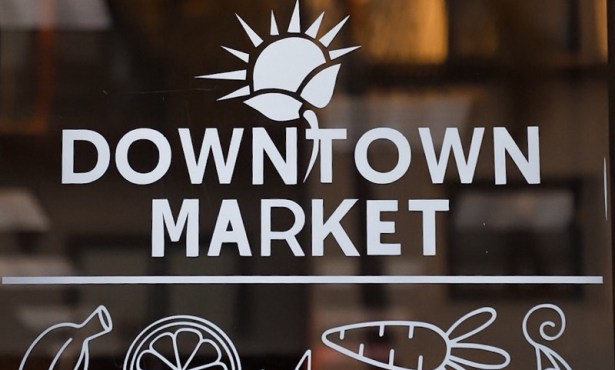
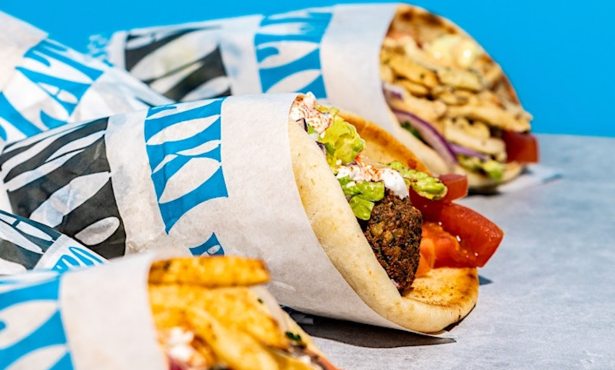
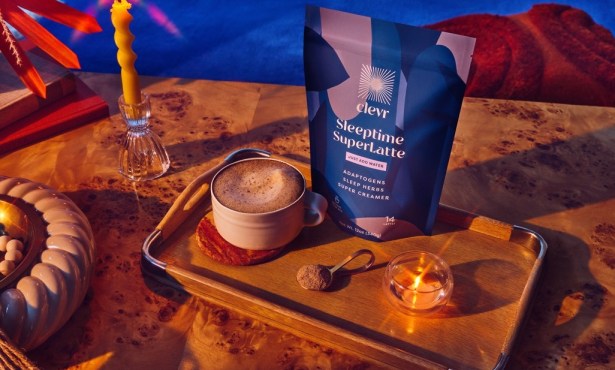
You must be logged in to post a comment.